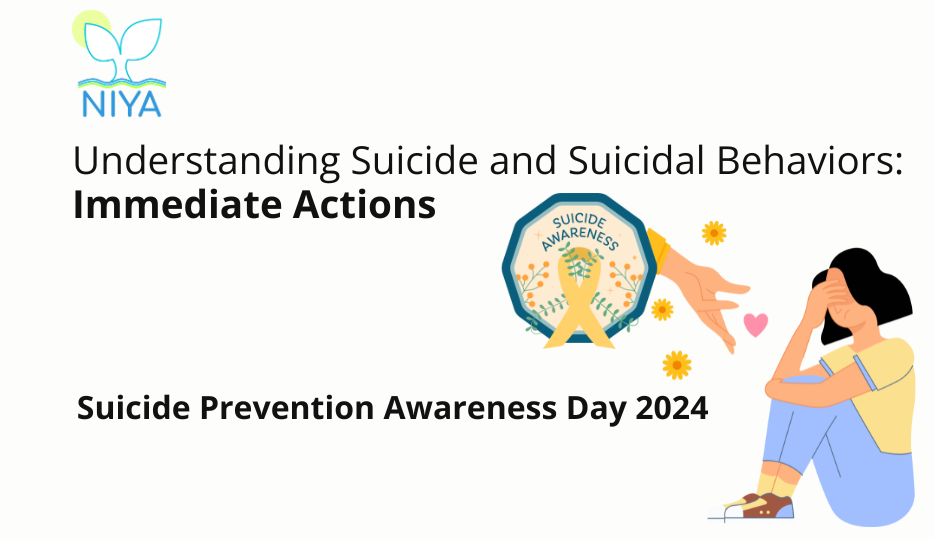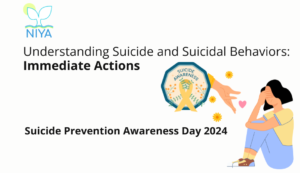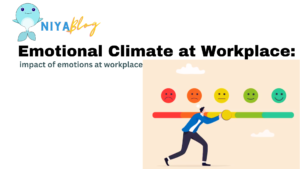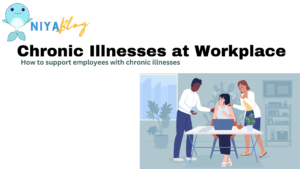
Understanding Suicide and Suicidal Behaviors
Suicide is a profound tragedy that affects individuals, families, and communities worldwide. It is a complex issue often stemming from a combination of emotional, psychological, and social factors. Raising awareness about suicide prevention is crucial to breaking the stigma, fostering open conversations, and encouraging those in distress to seek help. Through education, empathy, and understanding, we can build a supportive environment where every person feels valued and has access to the resources they need to find hope and healing. Together, we can save lives and offer a brighter future to those who are struggling.
Terminology of Suicide and Suicidal Behaviors
Understanding the specific terminology related to suicide and suicidal behaviors is crucial for both clinical practice and research. These terms not only help in accurately identifying and categorizing the different aspects of suicidal ideation and actions but also aid in developing targeted prevention and intervention strategies.
Suicide
Suicide is defined as a fatal act of self-injury where there is clear evidence of intent to die. This intent can be determined through various means, such as a suicide note, verbal expressions made by the individual before the act, or the method chosen, which might indicate a desire to end one’s life. Suicide is the most severe outcome on the spectrum of suicidal behaviors, and it represents a critical failure in the safety net that includes mental health services, social support, and other protective factors.
Suicidal Behavior
Suicidal behavior is a broad term that encompasses a range of actions and thoughts related to suicide. This spectrum includes passive and active suicidal ideation (thoughts about suicide), suicide attempts, and the completion of suicide. Suicidal behavior is not limited to actual attempts but also includes planning and serious contemplation of ending one’s life. Recognizing this spectrum is essential for early intervention, as many individuals who exhibit suicidal behavior do not go on to complete suicide but may attempt it multiple times, requiring ongoing support and treatment.
Suicide Attempt
A suicide attempt refers to a self-injurious act undertaken with the intent to die, though it does not necessarily result in death. The intent to die is a key component that differentiates a suicide attempt from other forms of self-harm or risky behaviors. Suicide attempts are critical moments that often signal deep psychological distress and a need for immediate intervention. The severity of the attempt can vary, ranging from superficial self-harm to life-threatening actions, and the likelihood of a future suicide is significantly higher after an initial attempt.
Active Thoughts of Suicide
Active thoughts of suicide involve a person contemplating specific actions to end their life. This can include identifying a method (e.g., thinking about using a firearm or taking an overdose), formulating a plan (e.g., deciding on a time and place), and having the intent to carry out the plan. These thoughts indicate a higher risk of suicidal behavior because they involve both the desire to die and the planning necessary to attempt suicide. Active suicidal ideation often requires urgent clinical attention to prevent escalation to an actual suicide attempt.
Passive Thoughts of Suicide
Passive thoughts of suicide refer to the contemplation of death or a desire to be dead, but without a specific plan or intent to end one’s life. For example, a person might wish they would not wake up in the morning or express a vague desire to no longer exist without taking any active steps toward ending their life. While less immediately dangerous than active suicidal thoughts, passive suicidal ideation is still a serious concern, as it can progress to active thoughts or attempts if left unaddressed.
Non-Suicidal Self-Injury (NSSI)
Non-suicidal self-injury involves engaging in self-injurious behaviors without any intent to die. Common forms of NSSI include cutting, burning, or hitting oneself. Individuals who engage in NSSI may do so as a way to cope with overwhelming emotions, stress, or psychological pain. While NSSI is distinct from suicidal behavior due to the lack of intent to die, it is a significant risk factor for future suicide attempts. People who engage in NSSI often require psychological support to address underlying issues and prevent escalation to suicidal behavior.
Suicidal Events
Suicidal events refer to occurrences that involve the onset or worsening of suicidal thoughts, an actual suicide attempt, or an emergency referral for suicidal thoughts or behaviors. These events are critical junctures where intervention can be most effective. For instance, a suicidal event might involve a person being admitted to a hospital after expressing a desire to die or after an attempted overdose. Monitoring and responding to suicidal events are essential components of suicide prevention strategies.
Deliberate Self-Harm
Deliberate self-harm (DSH) includes any intentional self-injurious behavior, regardless of the presence or absence of suicidal intent. DSH can involve cutting, burning, or other forms of self-inflicted injury. The distinction between DSH and NSSI lies in the ambiguity of suicidal intent in DSH. Some individuals who engage in DSH may have mixed feelings or unclear intentions about whether they want to die. DSH is a complex behavior that often overlaps with suicidal behavior and requires careful assessment and intervention.
Risk Factors for Suicide and Suicidal Behavior
Suicide and suicidal behavior are complex phenomena influenced by a wide range of factors. Understanding these risk factors is crucial in identifying individuals who may be at heightened risk and in developing effective prevention strategies.
Demographic Factors
• Gender:
o Males are statistically at a higher risk of completing suicide. This disparity is often attributed to the use of more lethal means, such as firearms or hanging. Social and cultural norms may also play a role, as men are often less likely to seek help for mental health issues, leading to unaddressed distress.
o Females, on the other hand, are more likely to engage in suicidal behavior, such as attempts, without necessarily completing suicide. This could be related to higher rates of depression and anxiety among women, as well as different social pressures and expectations. Women often use less lethal means in their attempts, which may result in lower suicide mortality rates.
• Age:
o Adolescence is a particularly vulnerable period for the onset of suicidal behavior. The adolescent brain is still developing, particularly in areas related to impulse control and emotional regulation, making young people more susceptible to the influence of stress, peer pressure, and social challenges. Additionally, the transition from childhood to adulthood involves significant psychological and social changes that can exacerbate feelings of despair or hopelessness.
• Incarceration:
o Individuals who are incarcerated face a significantly higher risk of suicide compared to the general population. Contributing factors include isolation, loss of freedom, exposure to violence, and the stigma associated with being in prison. Additionally, incarcerated individuals often have a higher prevalence of mental health issues, substance abuse, and histories of trauma, all of which compound their risk.
Psychiatric and Psychological Factors
• History of Suicidal Behavior:
o A previous suicide attempt is one of the strongest predictors of future suicidal behavior. Individuals who have attempted suicide once are much more likely to try again. This recurrence may be due to unresolved underlying issues, such as chronic depression, trauma, or a lack of effective coping mechanisms.
• Psychiatric Disorders:
o Mental health conditions such as depression, bipolar disorder, borderline personality disorder, and substance use disorders are closely linked to suicide risk. Depression is particularly significant, as it can create a pervasive sense of hopelessness and worthlessness, leading individuals to believe that suicide is the only way to escape their pain. Bipolar disorder can increase risk during both depressive and manic phases, with impulsivity playing a significant role in suicide attempts during mania.
• Psychological Traits:
o Certain psychological traits, such as hopelessness, impulsivity, neuroticism, and anxiety, are associated with an increased risk of suicide. Hopelessness, or the belief that the future holds no potential for positive change, is a particularly powerful predictor of suicidal ideation. Impulsivity can lead to rash decisions, including suicide attempts, without fully considering the consequences. Neuroticism, characterized by emotional instability and high levels of stress, can also exacerbate suicidal tendencies.
Social and Environmental Factors
• Social Isolation:
o Loneliness and a lack of social support are significant risk factors for suicide. Social connections provide emotional support, a sense of belonging, and practical assistance, all of which can act as protective factors. Without these connections, individuals may feel alienated, unsupported, and overwhelmed by their problems, leading to an increased risk of suicide.
• Exposure to Violence:
o Experiences of bullying, child abuse, and other forms of violence can lead to suicidal behavior. These traumatic experiences often result in long-term psychological damage, including depression, anxiety, and post-traumatic stress disorder (PTSD), all of which increase suicide risk. The internalized shame and guilt that often accompany these experiences can also contribute to suicidal ideation.
• Recent Life Events:
o Traumatic life events, such as the loss of a loved one, divorce, job loss, or other significant changes, can trigger suicidal thoughts. These events can create intense emotional distress, disrupt an individual’s sense of stability, and lead to feelings of hopelessness and despair. The impact of these events can be particularly severe if they occur in conjunction with other risk factors, such as a history of mental illness or social isolation.
• Occupation:
o Certain professions are associated with higher rates of suicide. For instance, physicians, police officers, and first responders face unique stressors, including high-pressure environments, exposure to trauma, and easy access to lethal means. These professionals often work long hours, have high levels of responsibility, and may struggle with the stigma of seeking help for mental health issues. The combination of these factors can lead to burnout, depression, and ultimately, suicidal behavior.
Health-Related Factors
• Chronic Illness:
o Chronic health conditions, such as HIV, epilepsy, and multiple sclerosis, are associated with an increased risk of suicide. The physical pain, disability, and social stigma that often accompany these conditions can lead to feelings of hopelessness and a diminished quality of life. The chronic nature of these illnesses can also contribute to depression and anxiety, further increasing suicide risk.
• Comorbid Conditions:
o The presence of multiple health conditions, particularly when they include both psychiatric and somatic disorders, can significantly elevate suicide risk. For example, individuals with both depression and chronic pain are at a much higher risk than those with only one of these conditions. The combination of mental and physical suffering can be overwhelming, leading individuals to view suicide as a means of escape.
Minority Groups
• Immigrant Populations:
o The risk of suicide among immigrant populations varies depending on several factors, including the country of origin, the cultural context, and the challenges of integration into a new society. Immigrants who face discrimination, social isolation, or difficulty adapting to a new culture may be at higher risk of suicide. Additionally, the stress of acculturation, language barriers, and economic challenges can contribute to feelings of hopelessness and despair.
• LGBTQ+ Populations:
o Lesbian, gay, and bisexual individuals, particularly youth, are at increased risk of suicide due to factors such as discrimination, social stigma, and rejection by family or peers. These individuals may also face internalized homophobia, which can exacerbate feelings of isolation and hopelessness. The risk is even higher for those who experience bullying or violence because of their sexual orientation.
• Indigenous Populations:
o Indigenous youth, in particular, face a significantly higher risk of suicide compared to their non-Indigenous counterparts. This elevated risk is often linked to the historical and ongoing effects of colonization, including poverty, social marginalization, loss of cultural identity, and intergenerational trauma. Indigenous communities may also have limited access to mental health resources, further exacerbating the problem.
Protective Factors Against Suicide
While the risk factors for suicide are numerous, several protective factors can help reduce the likelihood of suicidal behaviors. These factors provide a buffer against the stresses and challenges that might otherwise lead to suicidal thoughts or actions:
• Social Connectedness: A strong sense of belonging, close relationships with family and friends, and social support networks are crucial protective factors.
• Reasons for Living: Having meaningful reasons to live, such as personal goals, responsibilities, and attachments, can deter suicidal thoughts.
• Religious Beliefs: Participation in religious practices and communities can provide emotional support and a sense of purpose.
Emotional and Psychological Impact on Families and Friends
When someone takes their own life, the immediate emotional and psychological toll on their loved ones is immense. Family members and close friends are often left grappling with intense feelings of grief, guilt, and confusion. They may struggle with questions that have no easy answers: Could they have done something to prevent it? Did they miss signs of distress?
This emotional burden can lead to complicated grief, a prolonged and intense form of mourning that disrupts daily life. Survivors of suicide loss are also at a higher risk of experiencing mental health issues, including depression, anxiety, and post-traumatic stress disorder (PTSD). The impact on children and young adults can be particularly profound, influencing their development and emotional well-being for years to come.
Social and Community Impact
Beyond the immediate circle of the deceased, suicide has a broader impact on the community. Schools, workplaces, and social circles may experience a collective grief that can lead to a sense of instability and fear. The stigma surrounding suicide often exacerbates these feelings, making it difficult for communities to openly discuss their grief and support one another.
In some cases, communities may experience a phenomenon known as “suicide contagion,” where exposure to suicide within a community or through media coverage leads to an increase in suicidal behavior among others. This underscores the importance of responsible reporting and proactive support systems within communities.
Economic and Societal Costs
The economic impact of suicide is also significant. The loss of life often results in lost productivity, both for the individual and their loved ones who may struggle to maintain their work or studies due to grief. The healthcare costs associated with suicide attempts, including emergency care and ongoing mental health treatment, can also be substantial.
Moreover, the societal cost includes the loss of potential contributions the individual could have made to their family, community, and society at large. When a life is cut short by suicide, the effects are felt in the missed opportunities for innovation, creativity, and leadership.
Immediate Actions to Take
When someone shows signs of suicidal intent, it’s essential to act quickly, compassionately, and with a clear understanding of what steps to take. Here’s how to handle the situation effectively:
1. Stay Calm and Listen
• Approach with Calmness: When you first notice signs that someone may be considering suicide, it’s crucial to stay calm. Your composure can help the person feel safe and supported. Avoid any reactions that may seem shocked or overly emotional, as this might make them feel misunderstood or drive them to retreat further into their thoughts.
• Listen Actively: Listening is one of the most powerful tools you have. Focus on what the person is saying without interrupting or jumping to conclusions. Allow them to share their feelings fully. This means not just hearing their words but also paying attention to their tone, body language, and emotions. Refrain from offering quick fixes or solutions, as this can sometimes minimize their experience.
2. Ask Directly About Suicide
• Be Direct and Compassionate: Contrary to a common myth, asking someone if they are thinking about suicide does not increase the risk; in fact, it can provide relief. When you ask directly, you show that you are not afraid to talk about their feelings, which can be comforting.
• Use Clear Language: Phrasing your question in a straightforward manner is important. Ask questions like, “Are you thinking about ending your life?” or “Do you have thoughts of suicide?” This approach reduces ambiguity and allows the person to open up about their true feelings without feeling judged.
3. Provide Reassurance and Support
• Express Concern and Availability: Reassure the person that they are not alone and that you are there for them. Let them know that their life is important and that you care deeply about their well-being. Sometimes, people considering suicide feel isolated or burdensome; your reassurance can help counteract these feelings.
• Validate Their Feelings: It’s important to acknowledge their emotions without endorsing suicidal thoughts as a solution. Say something like, “I can see that you’re going through an incredibly tough time, but I believe there are ways we can find help together.” This shows empathy and also redirects the focus towards finding solutions.
4. Assess the Immediate Risk
• Evaluate the Severity: Determine whether the person has a specific plan, means, and timeline for attempting suicide. The more detailed their plan, the higher the risk. If they have access to means of self-harm, the situation is more critical, and immediate action is necessary.
• Ensure Their Safety: If you believe the risk is imminent, do not leave the person alone. Remove any objects that could be used for self-harm, such as sharp objects, firearms, or medications. Stay with them and seek emergency help.
5. Encourage Professional Help
• Facilitate Professional Support: Encourage the person to speak with a mental health professional such as a therapist, counselor, or psychiatrist. Offer to assist them in making an appointment or even accompany them to the visit if they are willing.
• Emergency Situations: If you believe the person is in immediate danger, contact emergency services or a suicide prevention hotline. Many hotlines provide 24/7 support and can offer guidance on what steps to take next. Don’t hesitate to involve emergency services if you feel that the situation is beyond what you can handle.
Long-Term Support Strategies
Once the immediate crisis has been managed, long-term support is vital in helping the person rebuild hope and resilience. Here’s how you can continue to provide support:
1. Stay Connected
• Maintain Regular Contact: Ongoing support is essential for recovery. Check in with the person regularly, even if it’s just through a quick text or call. Regular interactions can help them feel valued and remind them that they have a support network.
• Encourage Positive Engagement: While it’s important to be patient, gently encourage them to engage in activities that bring joy or fulfillment. Whether it’s a hobby, social activities, or simply going for a walk, these small steps can help in their healing process. However, respect their pace and understand that they might not be ready to participate immediately.
2. Promote Professional Follow-Up
• Support Therapy and Appointments: Encourage the person to continue with any therapeutic or medical treatment. Regular therapy sessions can be crucial in addressing the underlying issues that contribute to suicidal thoughts.
• Safety Planning: Work with the person and their therapist to develop a safety plan. This plan might include recognizing triggers, identifying coping mechanisms, and listing contacts to reach out to during a crisis. Having a concrete plan can provide the person with a sense of control and preparedness.
3. Educate Yourself
• Understand Mental Health Conditions: Educating yourself about mental health and suicide prevention can help you better understand what the person is going through. This knowledge can make you more effective in providing support and can also help you anticipate potential challenges.
• Manage Your Own Responses: Understanding the psychological aspects of suicide can help you manage your own emotions. It can also prevent you from inadvertently saying or doing something that might be harmful, even if well-intentioned.
4. Take Care of Yourself
• Acknowledge Your Own Emotions: Supporting someone who is suicidal can be emotionally draining. It’s important to take care of your own mental health so you can continue to be a stable and supportive presence.
• Seek Support: Don’t hesitate to reach out to friends, family, or even professional counselors for your own support. Being part of a supportive network can help you maintain your own well-being while caring for someone else.
When to Reach Out for Professional Help
Knowing when to involve professionals is crucial for both the safety of the person in crisis and your own peace of mind:
• Imminent Danger: If the person has a clear plan and the means to carry it out, or if they are in immediate danger, do not attempt to handle the situation on your own. Contact emergency services immediately. This could involve calling a crisis hotline, or taking them to the nearest emergency room.
• Severe Mental Health Symptoms: If the person is experiencing severe symptoms, such as hallucinations, delusions, or an inability to function in daily life, professional intervention is needed. This might involve hospitalization or intensive outpatient therapy.
• Persistent Suicidal Thoughts: If suicidal thoughts persist despite your support, encourage the person to seek ongoing therapy. Mental health professionals can offer more specialized care, including medication management and therapy techniques tailored to the individual’s needs.
• You Feel Overwhelmed: If you feel that the situation is too much for you to handle alone, it’s important to seek help. This might involve bringing in other trusted friends or family members, or reaching out to mental health professionals for guidance.
Suicide Prevention and Mental Health Support Helplines in India
TELEMANAS Helpline
• Number: 14416 or 1-800-891-4416
• Availability: 24/7
• Language: Multilingual (supports multiple regional languages)
• Details: TELEMANAS offers free mental health support, including counseling and emotional assistance for individuals experiencing distress, anxiety, depression, or suicidal thoughts. The service connects callers with mental health professionals who provide immediate support and guidance, ensuring help is available across India.
Vandrevala Foundation
• Number: 91-9999 666 555
• Availability: 24/7
• Details: The Vandrevala Foundation provides round-the-clock mental health support, including counseling for those struggling with suicidal thoughts. The foundation aims to offer immediate help and support to anyone in need, regardless of the time of day.
These helplines are crucial resources for anyone experiencing emotional distress, offering immediate support and connecting individuals with mental health professionals who can provide the care and guidance needed to navigate challenging times







